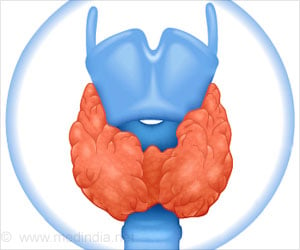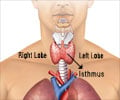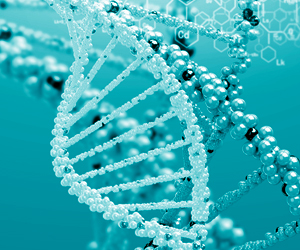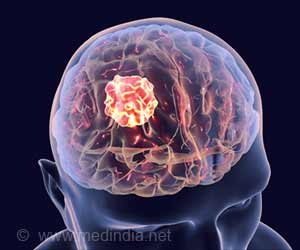Mutation of gene EZH1along with other known mutations lead to the formation of autonomous adenomas.

‘The mutations of EZH1 gene are known to cause proliferation and differentiation of thyroid cells while mutations in previously known genes trigger the disease process in hyperthyroidism.’





In many cases, such a hyperfunction is triggered by thyroid tumours, most of which are benign. Among them, the so-called autonomous adenoma accounts for the majority."We know that special mutations in certain genes are responsible for around 70% of all autonomous adenomas," says Dr. Davide Calebiro from the Institute of Pharmacology and Toxicology and the Bio-Imaging Center of the University of Würzburg.
It has been unknown until recently whether these mutations alone are sufficient to prompt thyroid cells to proliferate and produce excessive hormones, or whether additional factors have to be present. Also, it was unclear which factors are involved in the genesis of the remaining 30% of autonomous adenomas.
An international team of researchers, led by Davide Calebiro, Luca Persani from the University of Milan and Ralf Paschke from the University of Calgary, have now determined other causes of the disease.
Their results have been published in the current issue of Journal of Clinical Investigation (JCI) . Davide Calebiro is the first author of the study. Researchers from the group of Professor Martin Fassnacht from the Würzburg University Hospital also participated in the study. The Interdisciplinary Center for Clinical Research (IZKF) of the University of Würzburg supported the work.
Advertisement
EZH1 or Enhancer of Zeste Homolog 1 is the scientific name of this gene. EZH1 mutations work synergistically with the other known mutations, leading to the formation of autonomous adenomas. Moreover, functional studies show that EZH1 mutations modify signal pathways that cause thyroid cells to proliferate.
Advertisement
Source-Medindia














